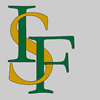 Index Fungorum Index Fungorum |
|
||||||
Index Fungorum has movedThe Index Fungorum database and web site has moved and is now based at the Royal Botanic Gardens Kew, a UK non-departmental public body with exempt charitable status and with over 250 years of scientific research on plants and fungi. The Royal Botanic Gardens Kew (via the Mycology Section) represents one of the three Index Fungorum partners together with Landcare Research-NZ (the New Zealand Crown Research Institute for terrestrial biodiversity and land resources, managing the national fungal collection PDD) and the Institute of Microbiology, Chinese Academy of Science. A consequence of this move is that our many users will have access to: More protologue links via BHL: Index Fungorum already has over 100,000 names linked to digitized images of the protologue, in the publication where the name was first published. The number of these links, critical for taxonomic and nomenclatural research, will gradually increase by making use of the extensive resources available in IPNI (the botanical equivalent of Index Fungorum). More links to digitized types: The type-rich Kew fungarium (estimated to contain over 30,000 types) has an active digitization programme (the current batch being digitized are the rust fungi on legumes). More links to barcodes (ITS sequences) from types: Implemented via collaboration with the GenBank 'RefSeq' project. More links from significant external resources:
Catalogue of Life, Encyclopedia of Life, GBIF, GenBank, UNITE, etc. The Index Fungorum, the global fungal nomenclator coordinated and supported by the Index Fungorum Partnership, contains names of fungi (including yeasts, lichens, chromistan fungal analogues, protozoan fungal analogues and fossil forms) at all ranks. As a result of changes to the ICN (previously ICBN) relating to registration of names and following the lead taken by MycoBank, Index Fungorum now provides a mechanism to register names of new taxa, new names, new combinations and new typifications — no login is required. Names registered at Index Fungorum can be published immediately through the Index Fungorum e-Publication facility — an authorized login is required for this. Species Fungorum is currently an RBG Kew coordinated initiative to compile a global checklist of the fungi. You may search systematically defined and taxonomically complete datasets - global species databases - or the entire Species Fungorum. Species Fungorum contributes the fungal component to the Species 2000 project and, in partnership with ITIS, to the Catalogue of Life (currently used in the GBIF and EoL portal); for more information regarding these global initiative visit their websites. Please contact Paul Kirk if you you would like to contribute to Species Fungorum. The Dictionary of the Fungi (currently 10th edition, 2008) published by CABI also contains the current consensus on the fungal taxonomic hierarchy to the rank of genus. You can search the database for the status of generic names, or walk down the hierarchy from the rank of Kingdom. The entries for each genus generally include authors and place of publication together with the type species (linked to Index Fungorum) and other data. The Bibliography of Systematic Mycology, compiled at CABI-UK and published by CABI, provides a survey of the literature encompassing the biodiversity, classification, distribution, evolution, identification, nomenclature, phylogeny, systematics and taxonomy of fungi (as defined in the first paragraph). You can search the database using the index of cited generic names or author names. All these databases need to be improved and updated in terms of data content. Funding from GBIF (2003-2004) under the ECAT work programme enabled the addition of most missing author citations and year of publication and the linking of most homotypic names. New names from the Index of Fungi, compiled at CABI-UK and published by CABI, are added every three months. In addition, names registered with Fungal Names and MycoBank are incorporated in Index Fungorum as they are released. Please contact Paul Kirk if you have any additions or suggested changes (which will be acknowledged). The database structures have been developed by Jerry Cooper and Paul Kirk and the web interface by Jerry Cooper. Please contact Paul Kirk if you have any problems with pages or database searches. NB. Searching the databases requires 'cookies' to be enabled on your browser. |
© Index Fungorum Partnership. Return to main page. Return to top of page.